Reading, Methods
By Kevin Isenberg
June 9, 2020

In my post about reading methods for printed books I emphasized that the manual transfer of the marked statements is very high.
To optimize this issue I would like to show you an approach for digital books.
Definitions
I use the colour scheme for marked statements from my previous blog post. This colour scheme can later be used as a prioritization. A short summary of the categories:
-
Thesis or statements are yellow
These could be unproven statements or a controverse which has to be analysed and validated.
-
Definitions are green
These are determinations of a term or a model which are a assumption for the following logical conclusions.
Through the combination of multiple definitions conclusions can be made.
-
Key messages are orange
Key messages are the few but relevant messages of a book. They characterize it. A summary could be generated of them and they have a higher priority than theses.
-
Unique contributions are violet
Contribitions are unique accomplishments in form of logical conclusions of an author. They are key messages of the book that generate value to the existing literature and they are timeless.
They make the book in its meaning to something unique, because these contributions are a step forward in comparisson to the current science. In the priority hierarchy they have the highest priority.
More at Reading methods for print
As it has been already described in the post I will only show you one possible approach. It is recommended for the reader to create his own approach.
What is the approach for digital books?
The approach consists of several steps. Interesting or statements that you would like to remember will be copied from the book and pasted into a text file which will later be refined:
1. Create the text file and fill in the necessary information
I have created a template file in which I enter the title and author of the books. Also, I have inserted some bullet points that contain the standard text format. The format often depends on each book file and the eBook viewer, which can cause the format of the text to break or change. If you use world you can copy the format of the default bullet points bei using the formatter tool.
2. Copy the relevant statements into the text file
While reading I copy and paste the revelant data into the text file. You could copy the statements for each chapter or just insert them regardless of it into the file. You won’t need the chapters for the refinement and only if you want to create a summary of each chapter.
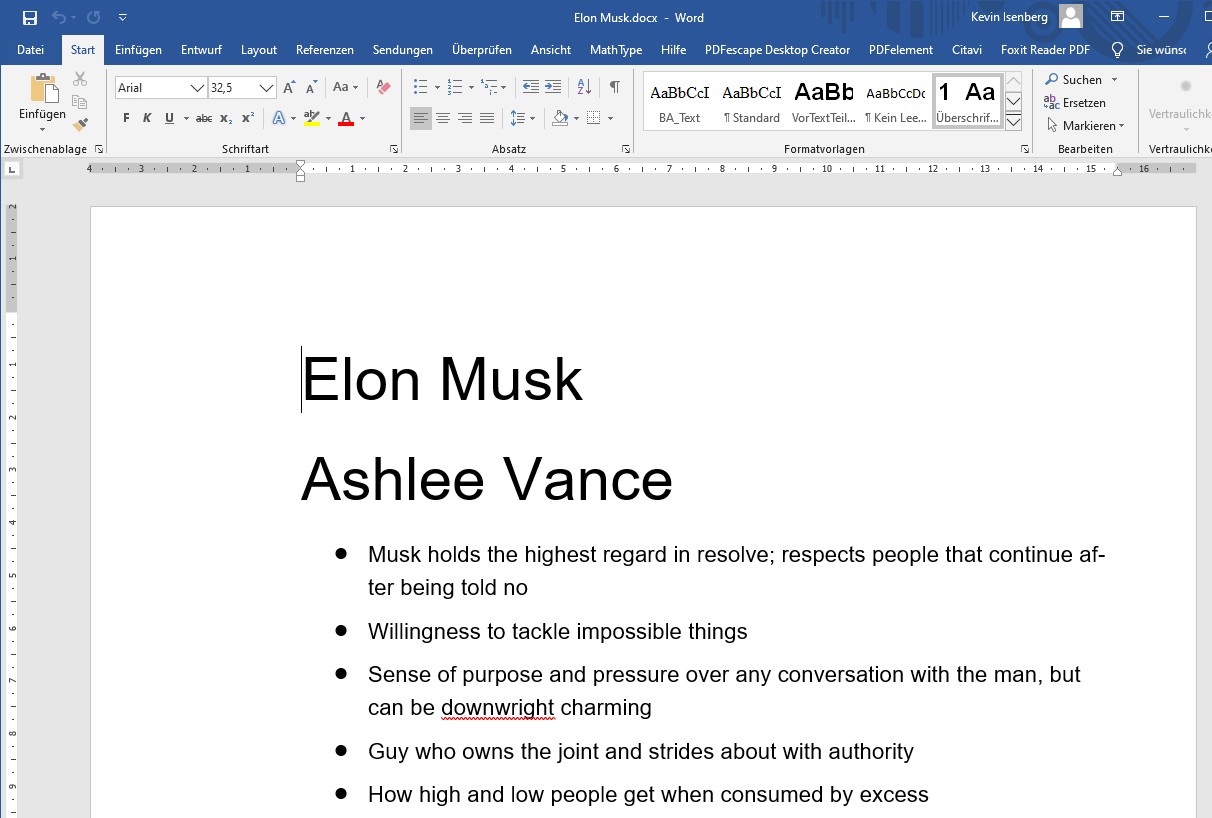
Copy the statements into the template file
3. Shorten it
The next step is to remove all statements that on another check don’t seem necessary anymore. While checking each statement I highlight statements that seem very interesting or important.
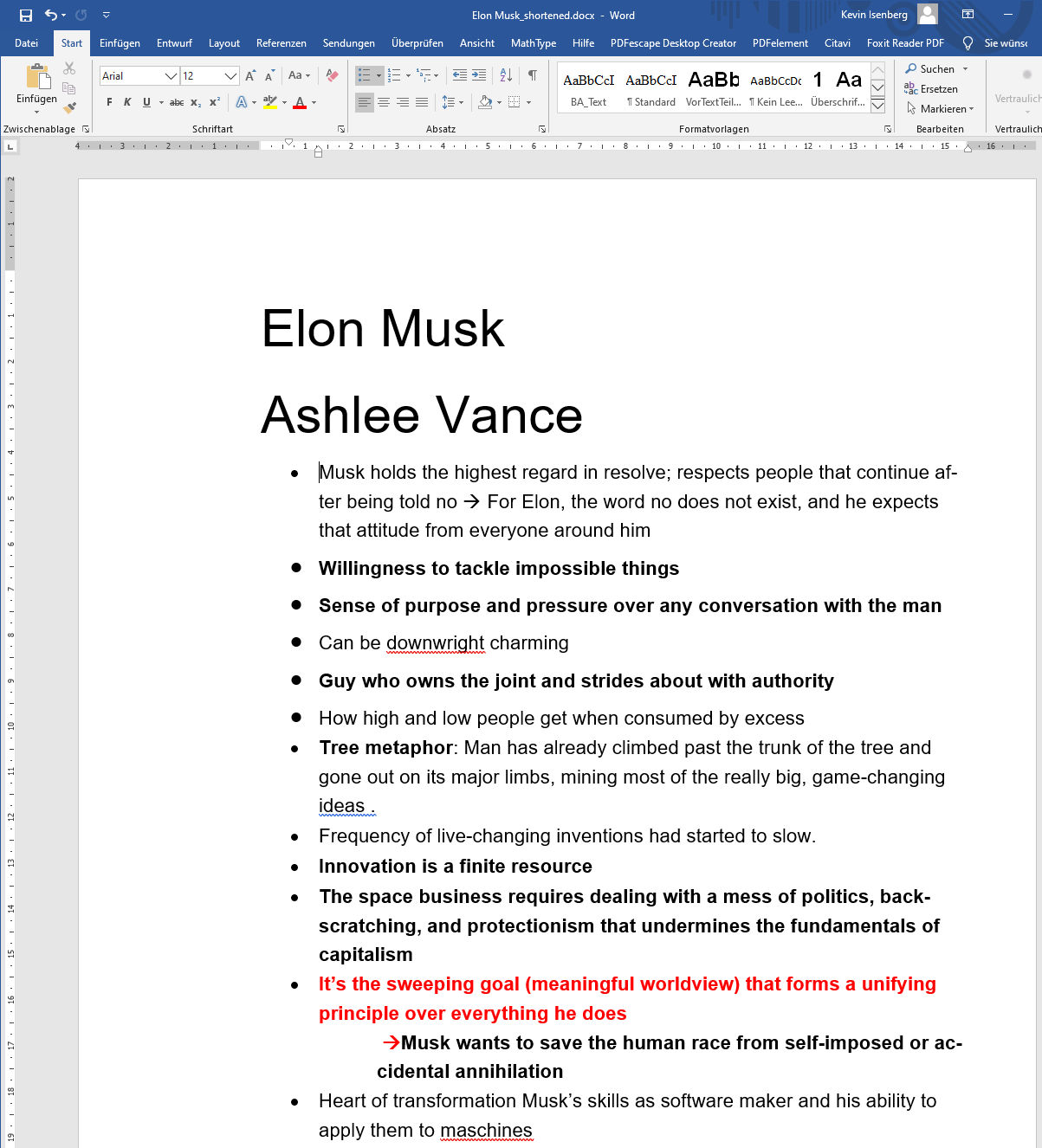
Shorten the text file by the relevant statements
4. Categorization of the statements
In the following example I categorize the statements into three categories Key Messages, Thesis and Notes. The highlighting of a statement with a colour will be kept.
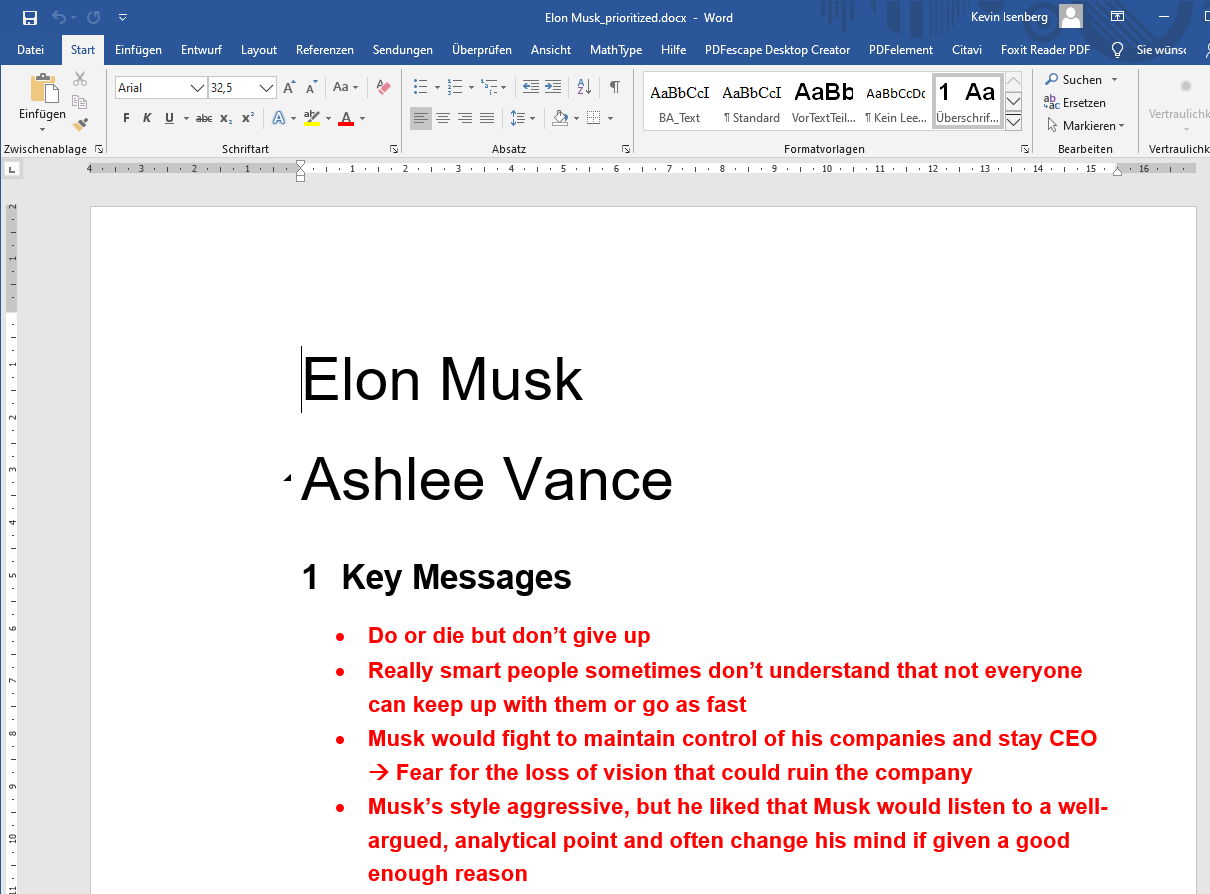
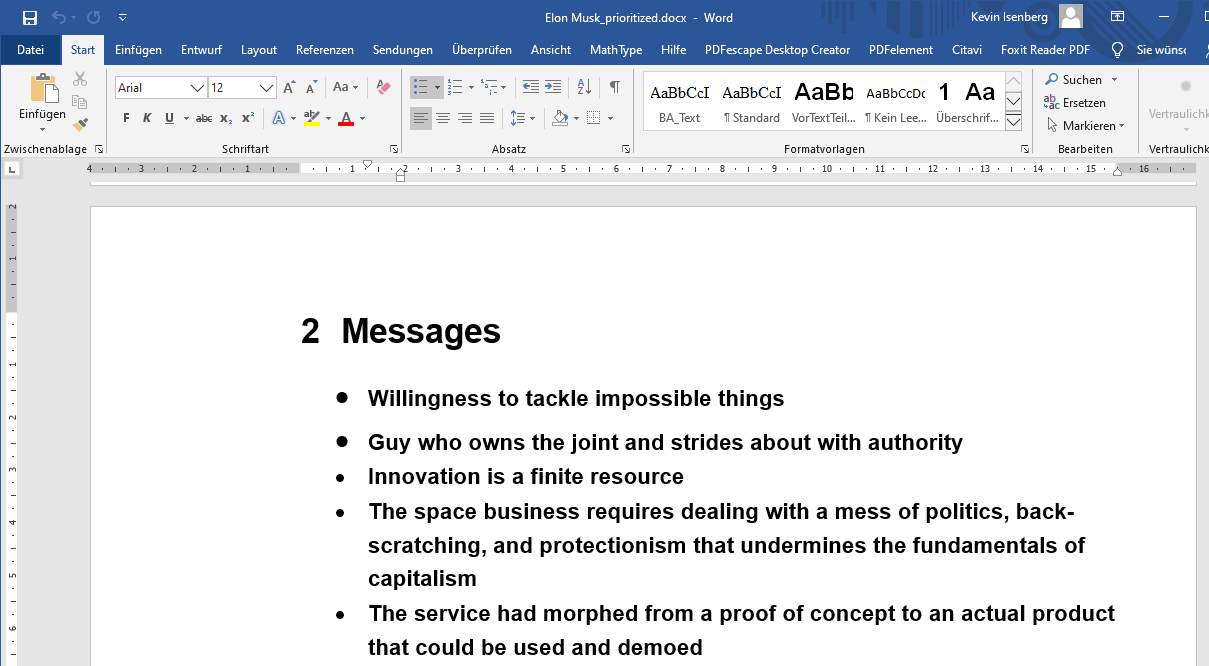
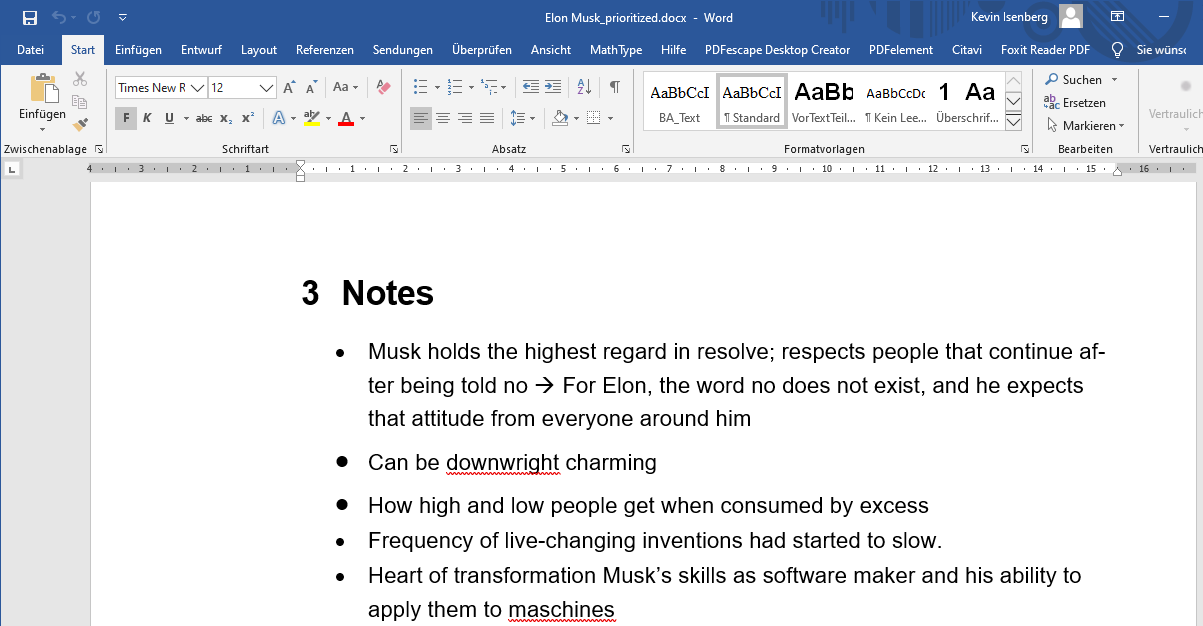
Example categories key messages, thesis and notes which will be highlighted with a colour
5. Finalization
By using the previous approach the user is able to create a summary of all categorized statements for further use. You are able to retrieve the summary at any point.
How can the approach be optimized?
The summary could be transferred to a knowledge database in which every summary is recognizable by a tag or a category. If you require information to a topic, you will be able to easily retrieve it by searching through the categories. The advantage is that you have created a unique summary in consideration of your personal criteria’ from your mental framework. If you would like to use a provider of summaries you should keep in mind that every summary is always a victim of the biases of the author.
In my opinion you cannot compensate the logical conclusions of an author through a summary. It is like using Powerpoint: The author reduces the relevant content to a few bullet points - that were written by his biases. In this case if you only focus on the verbal argumentation of the author or his slides you are not able to understand his conclusions. But maybe the author just wants you to see the bullet points without an explanation…
The previously described approach can be an orientation for all those that would like not too loose the overview of the books that they have read.